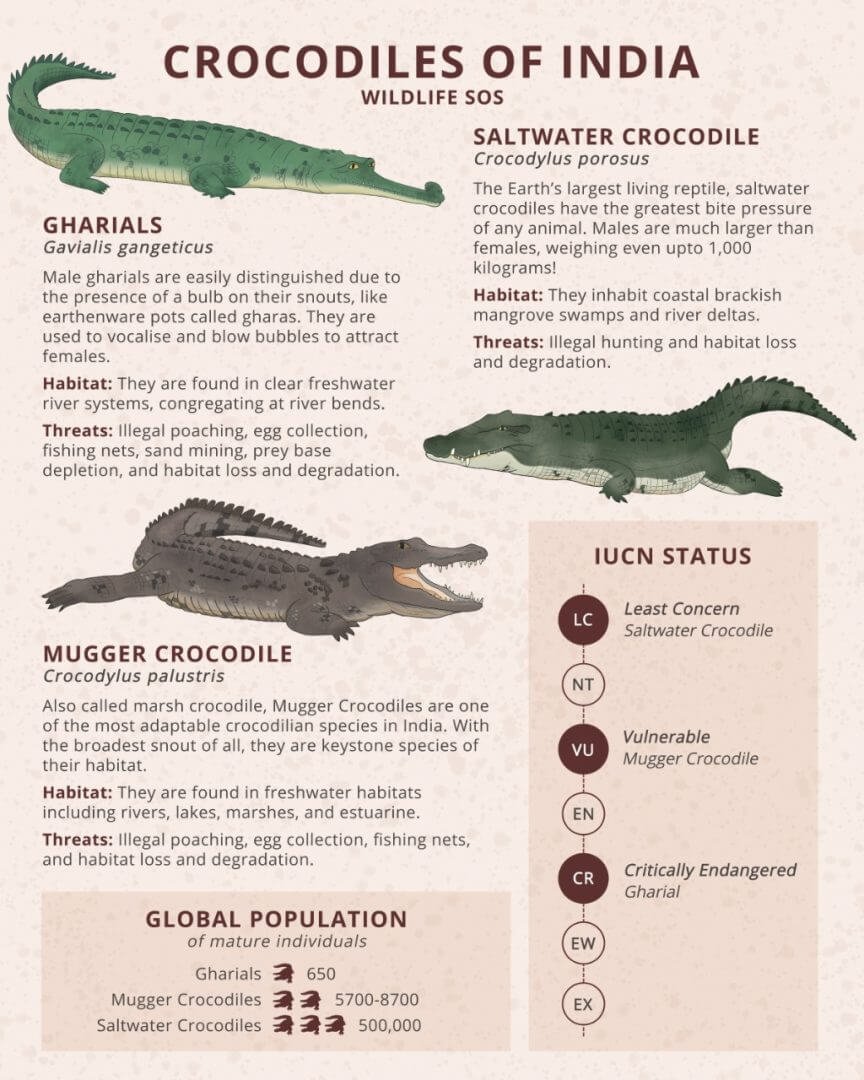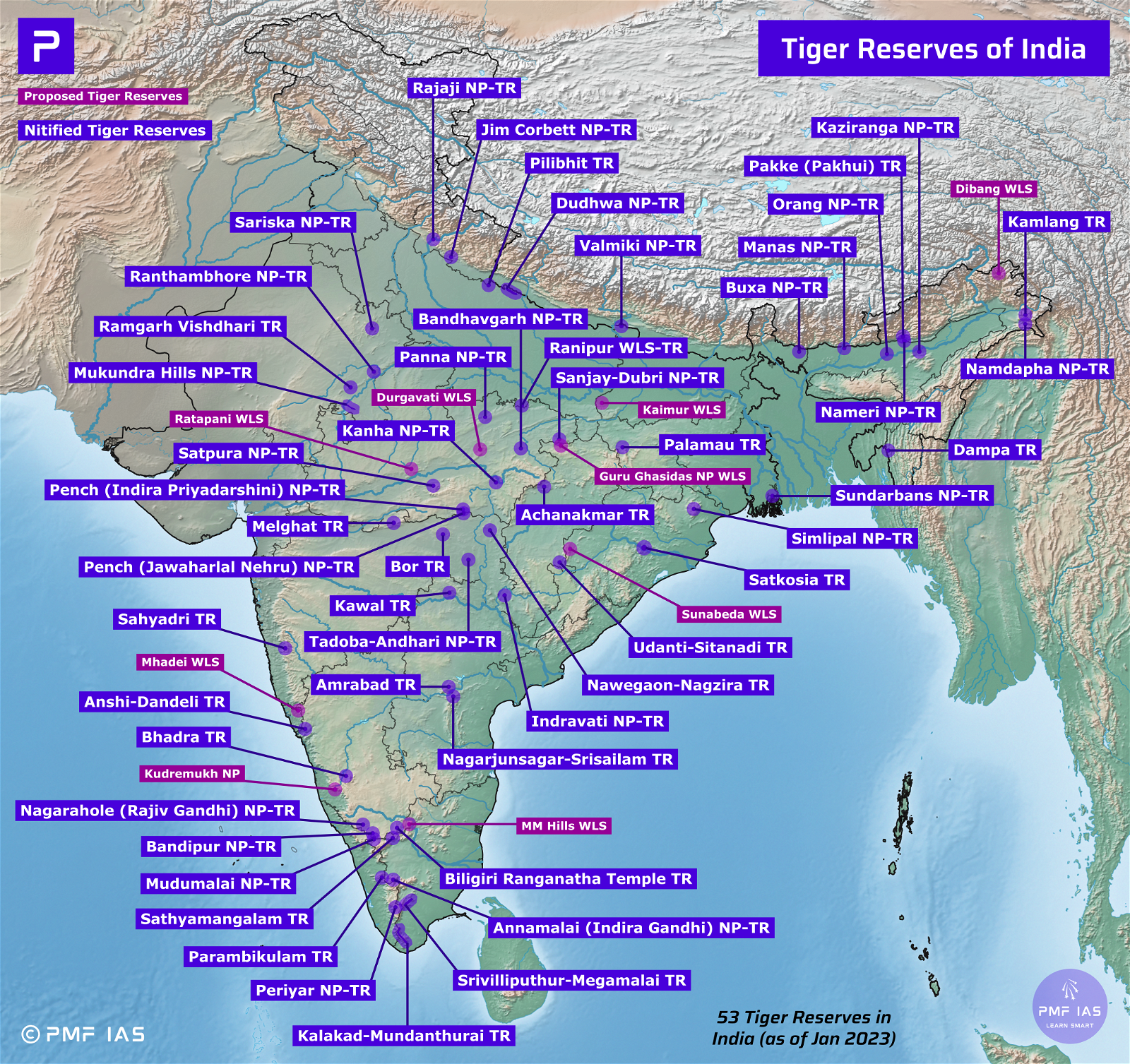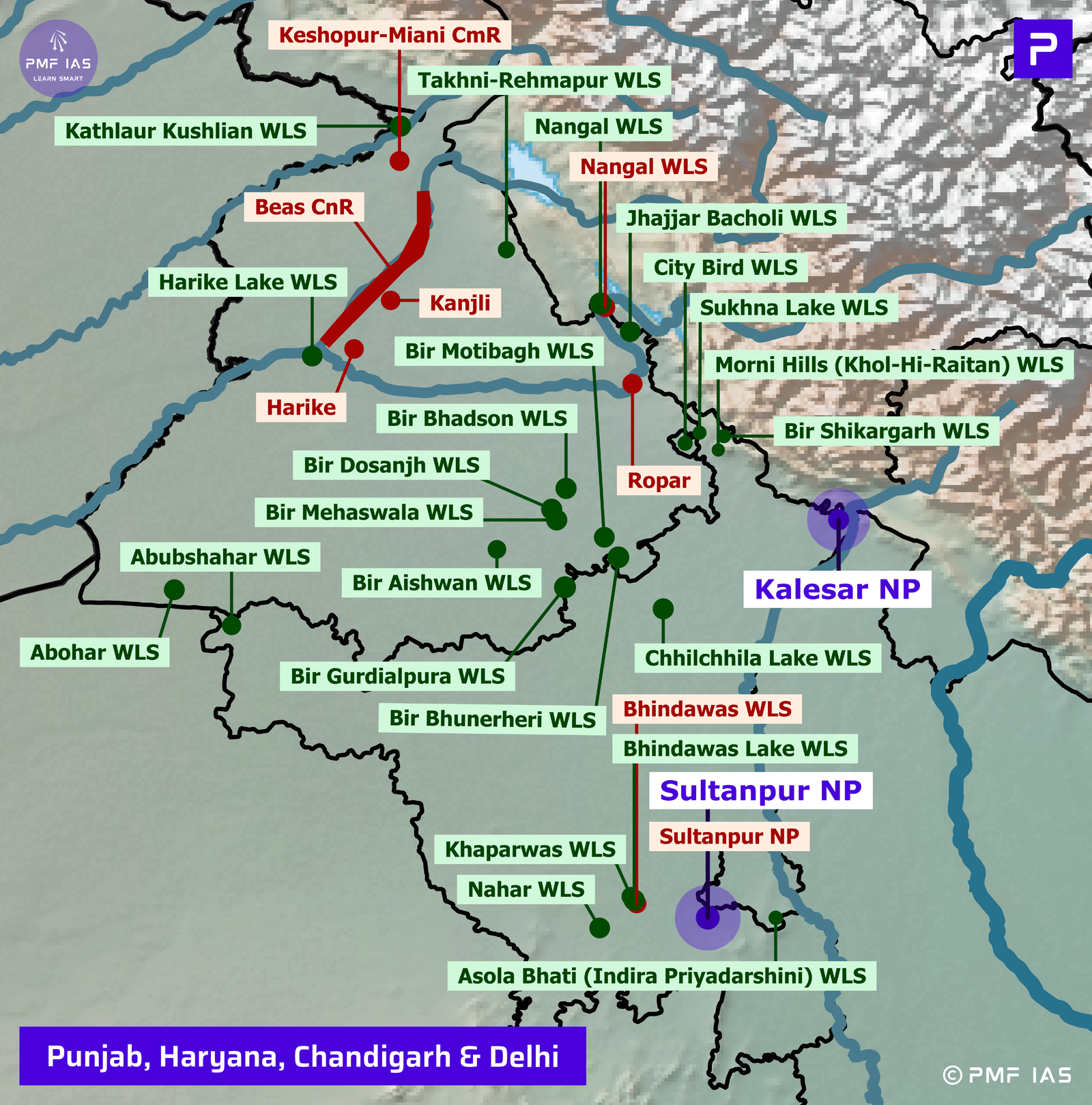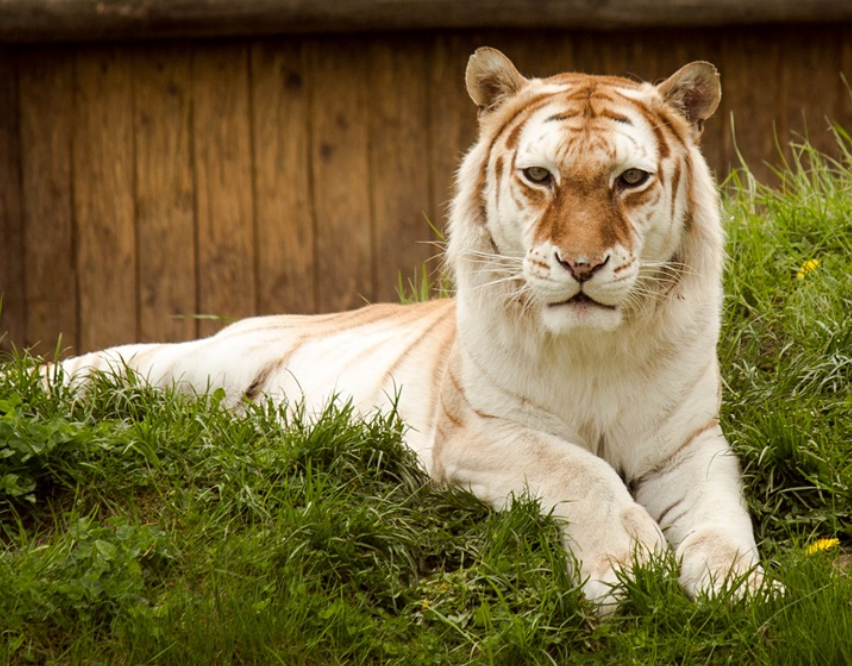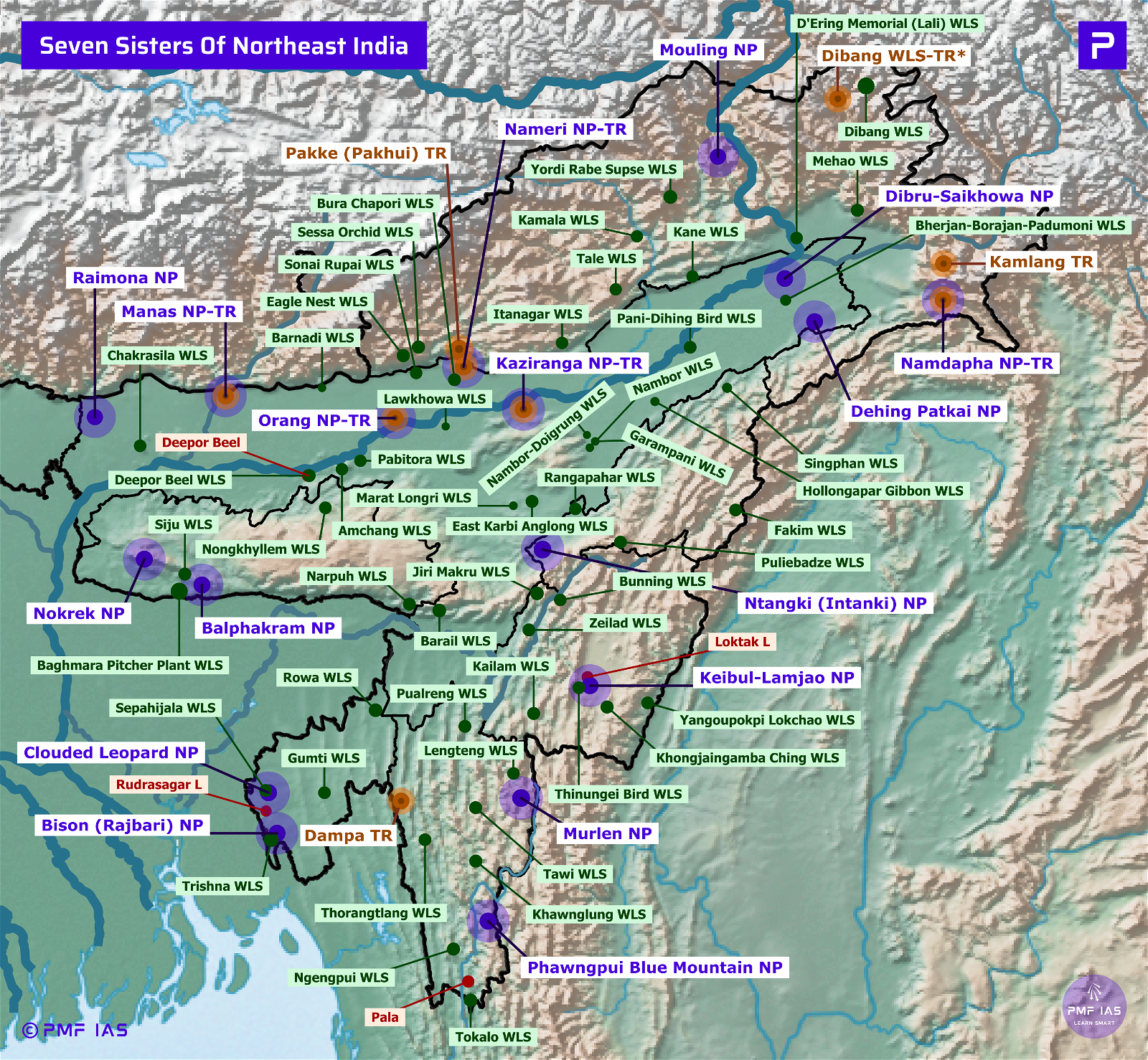
Blackbuck (Antilope cervicapra)
Subscribe to Never Miss an Important Update! Assured Discounts on New Products!
Must Join PMF IAS Telegram Channel & PMF IAS History Telegram Channel
- Context (DTE): Over two dozen waterholes are filled with water using tankers for blackbucks of Bihar’s Bhojpur, Buxar and Rohtas districts.
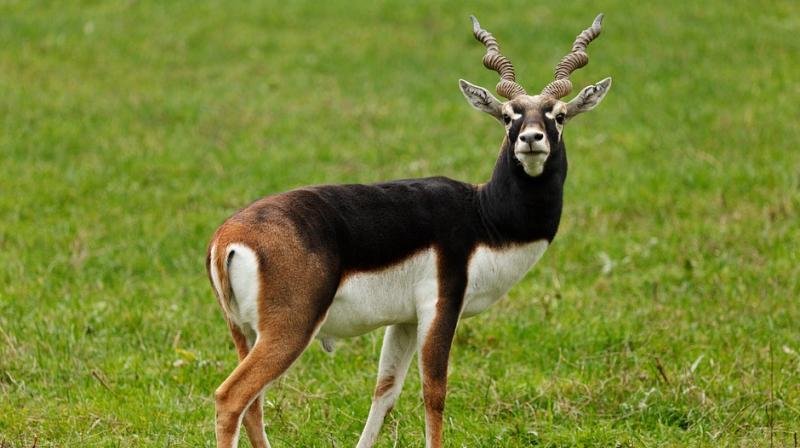
- Also known as Indian Antelope, it is the sole extant member of the genus Antilope.
- Formerly widespread across almost the whole of the Indian subcontinent, they are now limited to only small, scattered herds in Nepal, India and Pakistan.
Physical Features
- Blackbucks have slender and elegant bodies, pointed and delicate hooves and possess narrow, sheep-like muzzles and short tails.
- Their colouration depends on gender: the back, the sides, and the outer side of the legs are rich dark brown in males and yellowish in females.
- Both males and females have white underparts including the insides of the legs as well as a white ring around their eyes.
Characteristics
- They are seen in groups of 7-10. A mature female is generally the group leader.
- It is diurnal (active mainly during the day).
- They are considered as one of the fastest running animals on earth.
Habitat and Range
- Prefers tropical and subtropical savanna/rangeland and grassland.
- May also inhabit dry deciduous forest, woodland, semi-desert habitats, riverbanks and pasture.
- It is also found at the foothills of the Himalayas where the climate is moderate and jungles are not very dense.
- In India, they are found predominantly in the states of Gujarat, Punjab, Rajasthan and Haryana.
Conservation Status
- IUCN: Least Concern | WPA, 1972: Schedule I | CITES: Appendix III
- Threats: Excessive hunting, deforestation and habitat degradation.
- It has been declared as the State Animal of Punjab, Haryana, and Andhra Pradesh.
Significance in Indian Culture
- The antelope might have been a source of food in the Indus Valley civilisation (3300–1700 BCE); bone remains have been discovered in sites such as Dholavira and Mehrgarh.
- The blackbuck is routinely depicted in miniature paintings of the Mughal era (16th to 19th centuries) depicting royal hunts often using cheetahs.
- Tribes such as the Bishnois revere and care for the blackbuck.





![PMF IAS Environment for UPSC 2022-23 [paperback] PMF IAS [Nov 30, 2021]…](https://pmfias.b-cdn.net/wp-content/uploads/2024/04/pmfiasenvironmentforupsc2022-23paperbackpmfiasnov302021.jpg)

